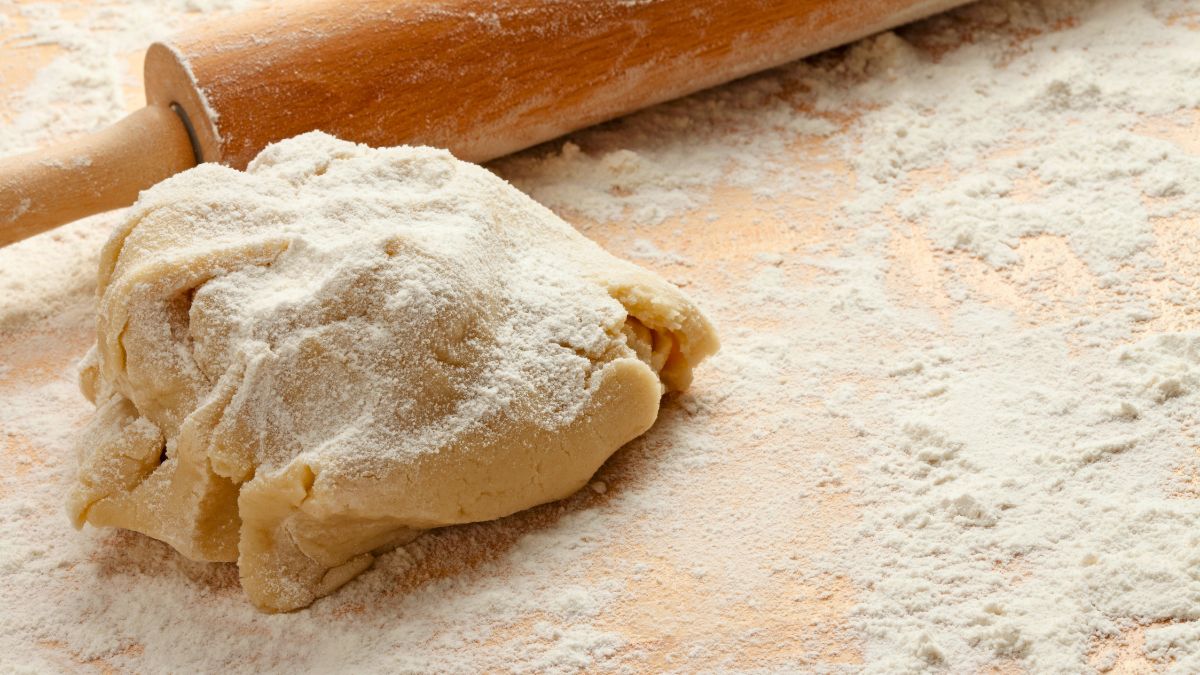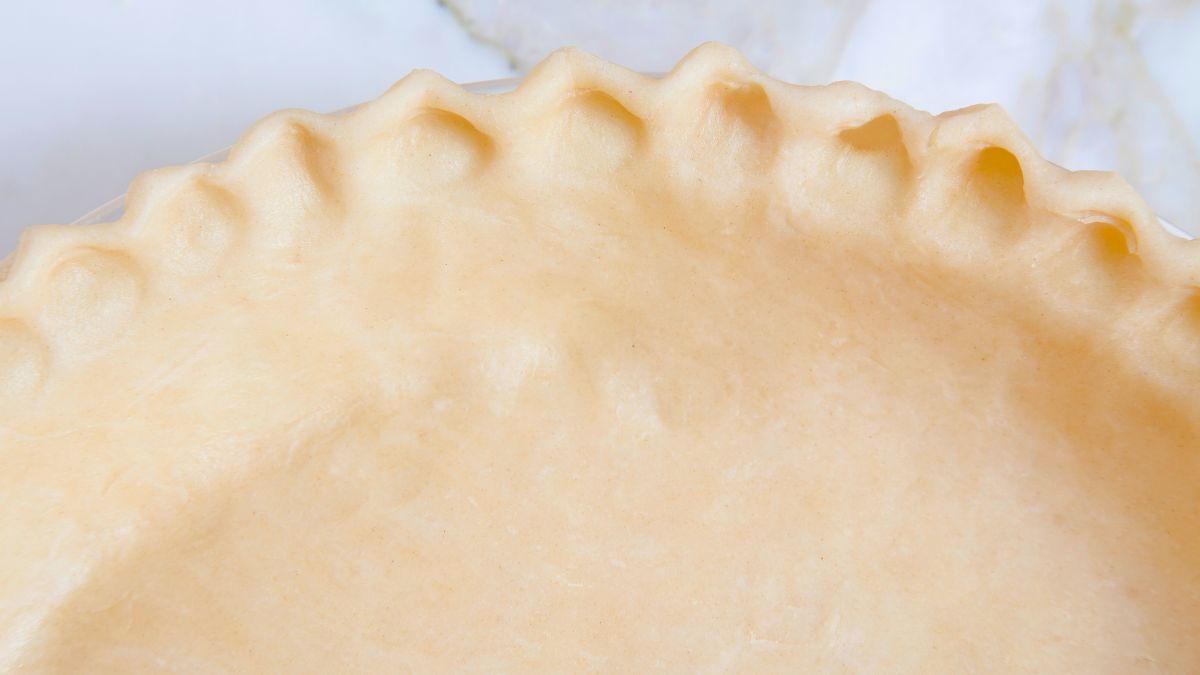How to Fix Too Much Water in Pie Crust? [7 Best Solutions]

The precision in measurements that pie crust dough requires is often stressful for me, and as much as I try to add everything in the perfect amount, I sometimes slip and add more of something. Adding more dry ingredients isn’t such a problem, but adding too much water could result in a disaster. This is why you should know how to fix too much water in pie crust.
To fix too watery pie crust, you can chill the dough, add more flour, use a bench scrapper, roll between plastic foil sheets, make layers, knead gentler than usual for a longer period, or make mini pies. You can apply some or a combination of these techniques.
Although it seems irreparable, you can make too-wet pie crust dough better with a few simple tricks. After a heated discussion with my fellow cooking enthusiasts and many successful and unsuccessful attempts to repair damaged pie dough, I just couldn’t help but write an article about it. So, in the following paragraphs, I will share my wisdom with you so you can easily salvage your pie crust dough the next time you add a little too much water.
How to Tell if Pie Dough Is Too Wet?
Although it can be a real challenge to fix overly wet pie crust dough, the good news is that it isn’t sneaky, and there are always obvious signs. You need to recognize this in time to be able to take remedial measures before it’s too late. So, what are the tale-tale signs of a too-wet pie crust dough?
The most common and clearest sign that your pie crust is too wet is its sticky texture. A well-balanced dough is soft and easy to handle, so if your dough sticks to your fingers, mixing bowl, or kneading surface, it is due to excess water.
Since it is sticky, it’s also difficult to roll. It will stick to the rolling pin, making it almost impossible for you to roll it out properly. Even if the dough doesn’t seem so sticky when you handle it with your hands, once it starts sticking to the rolling pin, that’s your sign that you’ve added too much water.
When the dough is well-balanced, it is easy to roll, and it doesn’t stick. Even if it does stick a little, you can easily take it off, and it won’t tear. On the other hand, a pie crust dough that is too wet sticks to the rolling pin, and it is very difficult to remove it.
Moreover, it’s very fragile and tears easily. So, even upon transferring the dough from the mixing bowl to the kneading surface, you will notice that it starts to tear up.
It also has a shiny appearance, which can seem very inviting, but it is actually a bad thing. A well-balanced pie crust dough should be matte in color. It also lacks definition, so instead of a well-shaped round form, it will likely look like a shapeless blob.
If you don’t notice any of these signals, yet your pie crust dough is too wet, you will notice it after it finishes baking. An overly wet pie crust dough is soggy when baked, especially at the bottom. It also doesn’t bake evenly, so there may be burnt patches as well as undercooked ones.
What Happens If Your Pie Crust Dough Is Too Watery?
If it’s too watery, pie dough will definitely give you a hard time. Since there’s an imbalance between the dry and wet ingredients, it won’t behave as it should, so you will need to make some adjustments to the process to make the best out of a bad situation.
This dough will be difficult to handle, and when I say difficult, I mean especially challenging. If you are inexperienced, this should be a good learning experience for you but also a frustrating one. Your dough will stick to your fingers and surfaces; you will have difficulty removing and working with it.
It’s also very unstable; it won’t stay in one piece, so expect it to tear and break apart very easily.
If you somehow manage to keep your watery pie crust dough into one piece and start rolling it out, expect bumps to form on the surface. A watery pie crust dough is impossible to roll out evenly, and you will have to place a barrier between the rolling pin and dough, such as a plastic wrap sheet, to try and even it out.
When this happened to me for the first time, I used too much flour in an attempt to stabilize the dough. So, I basically ran out of flour in minutes!
There may also be problems with the filling since the excess moisture in your pie crust dough leads to a soggy crust when it’s baked. You may end up with a shapeless and fragile dough burnt in some parts and undercooked in others.
What to Do When Your Pie Crust Is Too Wet?
Luckily, even a desperately wet pie crust dough can be saved or remedied to an extent sufficient for you to be able to pull off your pie. I usually apply a combination of the following methods to achieve the best possible result. So, glance at the fixers below and apply those that suit your situation.
Add More Flour

When your pie crust dough is too wet, your first response should be to add more flour. Now, I know that you want to fix the dough as quickly as possible, but you won’t solve anything by adding too much flour at once.
So, be patient with this fixer and go slowly and gradually. Even though flour absorbs water pretty quickly, it takes a little time for the process to fully develop. Sift the flour, and don’t add more than half a cup at a time, even if this amount seems too little.
Knead the dough after each time you add more flour, wait for a minute or two for the flour to develop into the mixture, and add more as needed.
Chill the Dough
If you are a beginner, this is the method I recommend for you. This is the easiest fixer, and it doesn’t change the dough permanently. While adding too much flour could potentially harm the dough, chilling it won’t do anything to the dough structurally, but it may solve your problem.
The lower temperature will harden the dough, and if the excess water isn’t so excessive to require other fixers, you could probably make a good pie. Don’t wait too long after you remove the dough from the fridge, and start rolling and baking as soon as possible.
Let the dough sit in the fridge for up to an hour.
Use a Bench Scraper
I use a bench scraper as an accompaniment with other methods because it doesn’t do much on its own. It is easier to handle the dough using a bench scraper, so instead of struggling with removing the dough from your fingers, use this nifty tool to handle the dough.
This method helps with the mechanics of working with watery dough, but it won’t do anything for the structure. I recommend you apply it when you add extra flour.
Roll Between Sheets of Plastic Wrap

Since a watery pie crust dough is difficult to roll out, a barrier between the rolling pin and the dough is a much-needed trick. Even though this method won’t make the rolling like when you roll a well-balanced dough, it will yield a much better result.
Take two plastic foil sheets and place them under and over the dough. This will prevent the dough from sticking to the surface and the rolling pin, making it much easier for you to roll it out.
Gently place the rolling pin onto the top foil and start rolling. Don’t apply any additional pressure other than the one from the rolling pin. When using this method, I usually roll for a longer period, but the method works only if you give it time.
Make Layers
If your pie crust dough is too fragile to handle, you can fortify it by dividing it into several pieces and rolling it in layers. I usually start with two pieces, but you can make three or four. Sprinkle a generous amount of flour on your surface and place one piece onto it.
Sprinkle more flour on the piece and place the other one on top of it. Sprinkle flour on this one, too, and start rolling them gently. Sprinkle more flour as you go along, and keep the pressure very mild.
Repeat the procedure as many times as needed. It takes two repetitions for me, but that doesn’t have to be the case for you.
Make Mini Pies
If nothing else works, consider making pies with the dough you have. It is more challenging to make a single larger pie with wet dough, but dividing the dough into several smaller pieces and working with them can simplify things.
So, if you can’t find a way to fix your pie crust dough and make one pie with it, make several smaller pies; they will be just as tasty!
Shield the Edges
Since a watery pie crust dough tends to bake unevenly, even if you applied some of the above fixers, I recommend you protect the edges so as to prevent them from burning. I usually wrap tin foil around the pie edges and pop it into the oven.
Even though they may be slightly overbaked, they won’t burn.
What Should a Perfect Pie Dough Look Like?

The two criteria by which you evaluate dough are texture and appearance. A perfect pie dough has a smooth and even texture. It is soft, but it isn’t sticky, and it is very easy to knead and roll.
It doesn’t stick to the surface or the rolling pin, and even if it does, it is easy to remove it. It shapes well and easily, and it transfers from one place to another in one piece. Once you shape it, it holds its shape well, and you can easily reshape it if you want.
Its appearance is even and uniform. Its color is matte eggshell, and it has no discolorations or darker spots on it.
A perfect pie crust dough has a smooth surface, it isn’t glossy, and it doesn’t wrinkle. Even if it wrinkles a little, you can easily smoothen it out with your hands or while rolling.
When baked, it is even-colored, except maybe a little darker on the edges. It forms a stable shell for the filling, and it isn’t overly soggy or overly dry.
Does your pie crust dough always come out perfectly? Do you have some special tricks you use? I would love to hear about it in the comments below!
